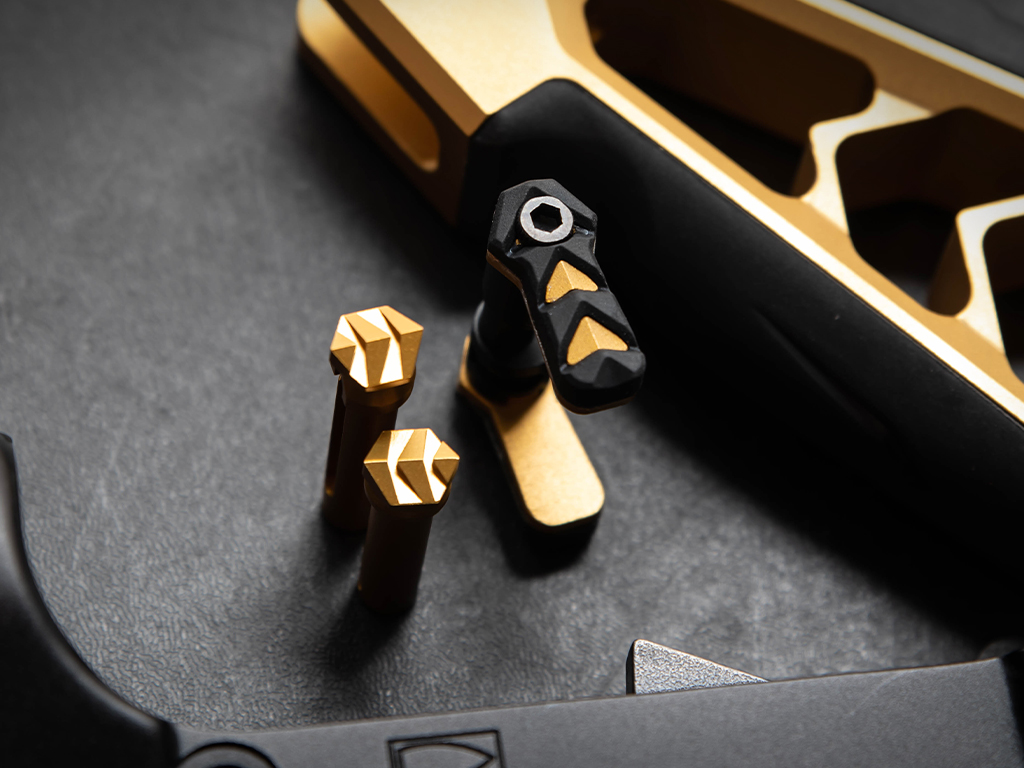Blog # 279 - The Merits of Upgrading Your AR-15 Takedown Pins

Dec 6, 2023
By Luke Cuenco
0 comment(s)
The AR-15 is possibly one of the simplest, if not THE simplest modern long arm to disassemble on the planet. Most if not all of you already know that the AR-15’s upper and lower components are only held together by two takedown pins which are in turn held in place by two sets of detents, and springs. There is probably nothing inherently wrong with mil-spec takedown pins and for most, nothing is lost by keeping these stock, OEM, and plain pieces of essential AR-15 hardware. However, if you are considering a switch-up for those AR-15 takedown pins, you might be looking for a little bit more information about the merits and potential drawbacks of swapping out or using non-factory or mil-spec takedown pins. Today, we’ll go over just that.
First off, let's give credit where it's due. Those mil-spec pins are like the unsung heroes of the AR-15—they might not be fancy, but they're reliable and cheap to replace and buy. They've proven themselves time and again, ensuring straightforward disassembly and reassembly. Their main drawback is when it comes to quick disassembly and reassembly on particularly tight uppers. However, once again this is usually easily overcome by using something as simple as a punch, the nose of a bullet, or spent casing to push the pins out just enough to get them with your own hands. There is virtually nothing wrong with having bone-stock AR-15 takedown pins.
However, upgrades bring their own perks. Picture this: extended tabs or larger heads that make taking the rifle apart feel like a walk in the park. They cater to specific needs, making disassembly smoother for folks who might face challenges with dexterity or for situations where speed matters. For me, having a legally registered SBR AR-15 lower means I can slap on pretty much whatever length or caliber AR-15 upper I want on it and have the convenience of a shorter barreled gun without the need to own multiple SBR lowers.
Durability is another angle to consider. While the standard pins are tough cookies, those who put their AR-15s through the wringer might lean towards sturdier alternatives. Upgraded pins with better materials or coatings could mean fewer worries about wear and tear, especially in rugged environments or with frequent breakdowns. Standard AR-15 trigger pins can rust if left exposed to the elements for too long and aftermarket stainless-steel pins can help prevent this if you don’t plan on coating your rifle in some other type of protective coating.
Then there's the fun part—customization. Upgraded pins come in all sorts of flavors—different colors, designs, and finishes. Some folks swap them out purely for looks, adding a bit of flair to their rifles. Functionality gets an upgrade too. Smarter locking mechanisms or designs in these upgraded pins ensure a tighter fit between the upper and lower receivers. That means less wobbling and more stability, which could be a game-changer for those seeking better precision. Some Takedown pin designs remove the captured pin design and allow the takedown pins to be completely removed from both the lower and the upper.
Ultimately, it's about what suits your style and needs. The stock pins get the job done reliably, but the appeal of enhanced features or a personalized look can't be ignored. Whether it's about convenience, durability, style, or performance, choosing takedown pins is part of making your AR-15 uniquely yours. In the grand scheme of AR-15 mods, takedown pins might seem small, but their impact on ease of use, durability, and aesthetics matters. Stick with the classics or explore the world of upgrades—it's all about shaping your AR-15 experience, making it a rifle that not only performs but also reflects your style and preferences.
